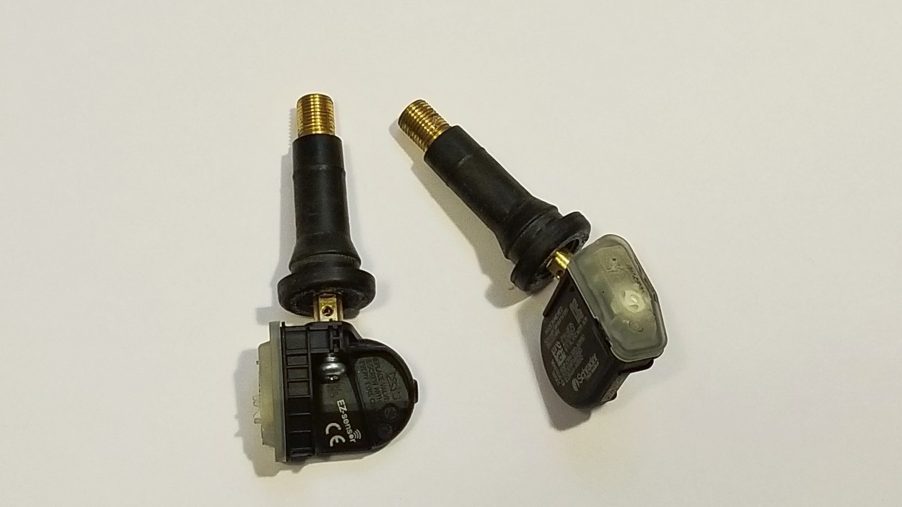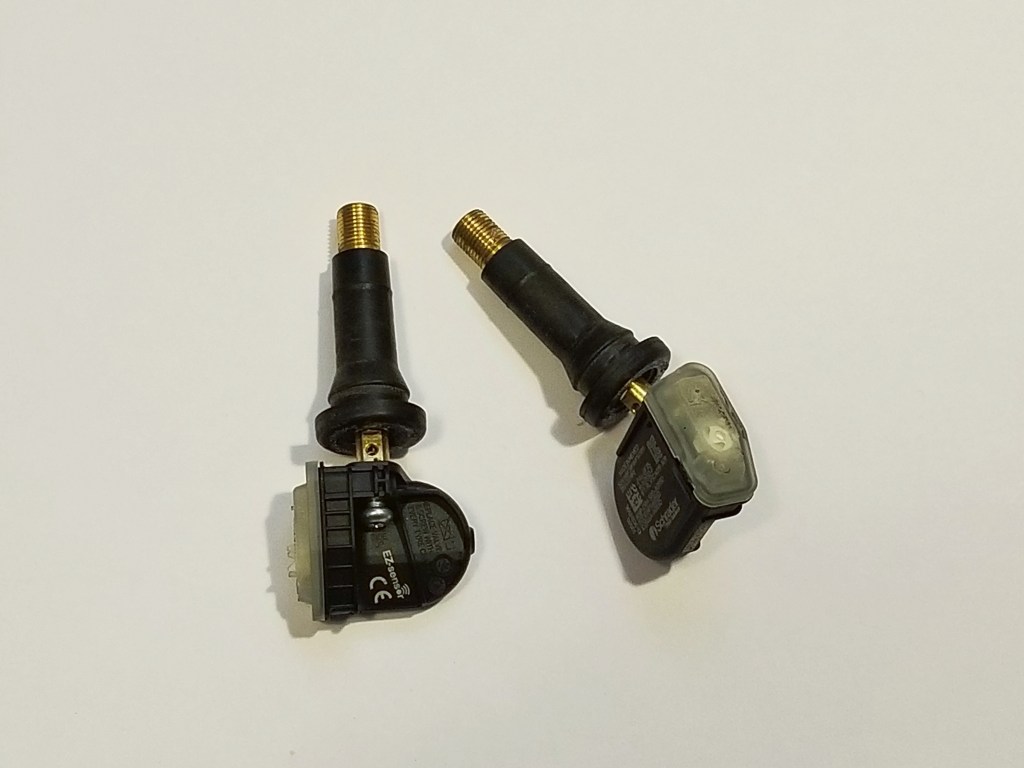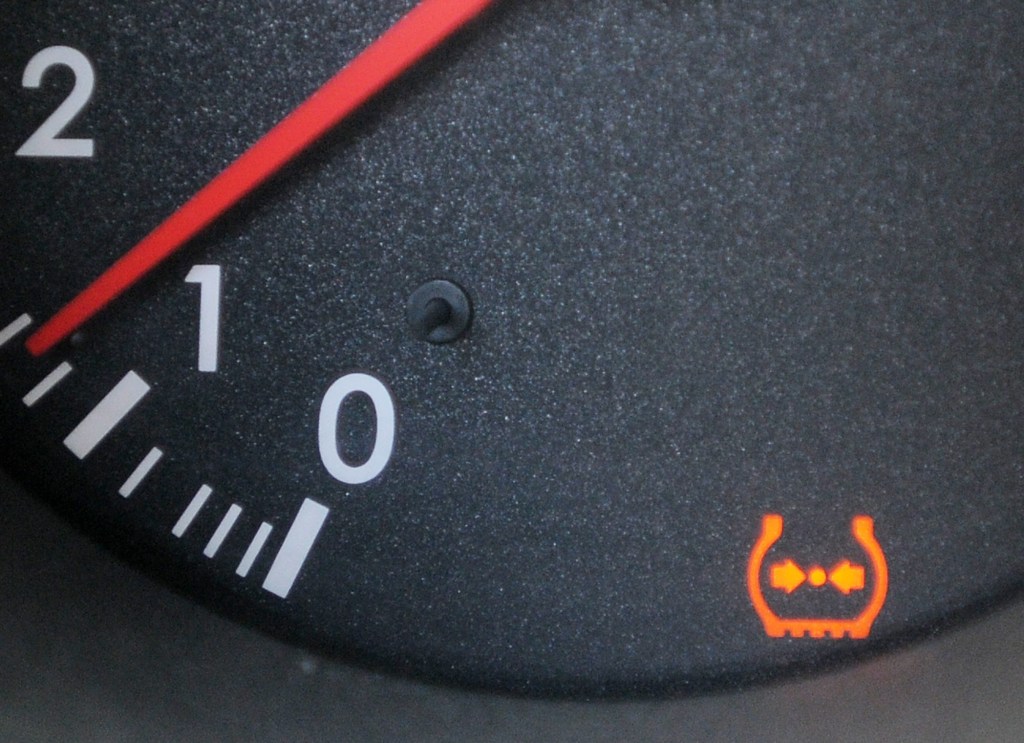
Replacing Tire Pressure Sensors Is More Complicated Than You Think
Tire pressure sensor guide highlights:
- Tire pressure sensors can be either indirect or direct; and if they’re direct, they can be either valve stem or banded types
- Incompatible wheels, frequency mismatches, and dead batteries can cause sensor problems, as can corrosion, physical damage, and extreme temperatures
- Once you have the right tire pressure sensors installed, resetting the TPMS light usually only requires a short drive
Many drivers worry about big maintenance tasks, but the ‘little’ things are often the most annoying. And sometimes, as I learned after a disastrous spark plug change, they’re the easiest to screw up. Compared to that, dealing with tire sensor problems seems like a cakewalk. However, if you’re dealing with an illuminated TPMS light, know that it’s not as simple as it looks.
Tire pressure sensors aren’t universal

If you want to see how inflated or deflated your car’s tires are, you use a tire pressure gauge. Your car’s tire pressure monitoring system (TPMS) has gauges, too, in the form of tire pressure sensors. And thanks to the TREAD Act, if your car is a 2008-or-later model, it has these sensors. But which kind often changes across models and brands.
TPMS tech falls into two categories: direct and indirect. Indirect systems use ABS sensors to measure wheel rotation. If these sensors find one tire is spinning faster than expected, that means it’s under-inflated, which triggers the familiar warning light. In contrast, direct systems rely on individual sensors attached to each wheel. These directly measure the air pressure in a tire and relay that information wirelessly via radio signals to a central module. And if a sensor sees the tire pressure is under the recommended level by 25% or more, it triggers the warning light.
Because these systems are so different, it stands to reason that you can’t replace direct tire pressure sensors with indirect ones or vice versa. However, you also can’t necessarily swap direct sensors between cars. And that’s because there are two direct sensor types, NAPA explains.
Some direct tire pressure sensors are the ‘valve stem type.’ As in, they’re basically sensors with valve stems attached. Meanwhile, ‘banded type’ sensors are, well, bands mounted to the wheel 180° across from the valve stems. And again, valve stem sensors aren’t interchangeable with banded ones.
Make sure you have compatible wheels
Normally, drivers only deal with tire pressure sensors if they or the whole TPMS has a problem. Usually, that means a blinking warning light and/or an error message. However, they also become an issue if, like me, you have separate wheel-and-tire sets for winter and summer.
Yes, you can always have one set of wheels and repeatedly swap tires as the weather demands. But removing and installing tires is tough without a dedicated machine. And rather than paying someone multiple times to put the tires on, you only need to pay them once. Well, twice: once in the winter and once in the summer/spring. So, having separate wheels for separate seasons saves time and money.
But if your car has TPMS, you also need a second set of tire pressure sensors. Otherwise, the warning light would stay on all winter. Then you wouldn’t know without checking if your tires are low on air.
Yet there’s another complication here. Technically, aftermarket suppliers aren’t obligated to follow that TREAD Act I mentioned earlier. As a result, not all aftermarket wheels are TPMS-compatible. Admittedly, per the TREAD Act, tire shops are legally obligated to not use aftermarket parts if they would disable the TPMS. But that still doesn’t guarantee that your fancy wheels won’t throw warning lights without additional modifications.
Tire pressure sensor replacement can get expensive, so check part numbers and wireless frequencies
That statement flashed into my head when my Fiat 500 Abarth’s TPMS warning light went on after I switched to my summer wheels. But then I remembered I had compatible wheels. At which point, I started thinking about my tire pressure sensors. I’d bought them new from a Stellantis dealership after triple-checking the compatibility, so I thought they’d be good.
As it turns out, they weren’t. When I went to a Fiat dealership to diagnose the problem, it turned out that Stellantis offered two kinds of sensors for my Abarth. One was a so-called ‘value line’ option, while the other was a twice-as-expensive OEM version with a different part number. And after installing the pricier sensors, the light went away.
So, is the lesson here not to buy cheap tire pressure sensors? Well, yes and no. True, cheap parts cost less for a reason. But in this case, the price wasn’t necessarily the culprit. As it turns out, although TPMS sensors communicate via radio frequencies, they don’t operate on the same frequency. It’s possible my Abarth’s module simply couldn’t pick up what the cheaper sensors were sending out. And since it couldn’t ‘hear’ the sensors, it assumed there was a fault and threw up that light.
Alternatively, it could be that my Abarth’s TPMS is a high-line system and the value sensors were for a low-line one. High-line systems are more expensive but let cars display pressures for individual tires, Edmunds explains. Also, their sensors only transmit information when the car prompts them. Low-line systems, on the other hand, have their sensors transmit at random intervals. They’re cheaper, but they can’t display individual tire pressures. And without careful programming, these sensors can crosstalk.
Regardless, it wasn’t the most expensive goof-up I’ve ever done, but it’s still not fun paying twice for the same part. And even a set of four cheap sensors often costs at least $100, not including installation costs. Learn from my mistakes and save some cash.
Dead batteries aren’t the only things that cause sensor faults

There’s a simpler explanation for my TPMS woes: the tire pressure sensors were dead. Considering I bought them brand new from a Stellantis dealership, I highly doubt that all four would be faulty. But that doesn’t mean sensors can’t go bad over time.
With direct tire pressure sensors, faults are often caused by dead batteries. The batteries typically last a few years, but they’re not replaceable. When one dies, the entire sensor gets replaced.
But other things can cause sensor faults. Extreme cold and heat as well as repeated pothole trauma can damage both kinds of direct sensors. Valve stem types are also susceptible to valve-stem corrosion. Hence why you should always keep the caps on. Furthermore, tire sealants can damage sensors if they’re exposed for an extended period. So, if you use it to temporarily fix a leak, make sure you clean your sensors afterward.
Will replacing the sensors reset your TPMS light?
If your tire pressure warning light comes on, don’t immediately start sensor shopping. First, make sure that your tires are properly inflated. Then, go for a short drive to let the TPMS reset. Only if that doesn’t do the trick should you start eyeing the sensors as culprits.
Whether you’re replacing old sensors or putting new ones on your second set of wheels, you need to reset your car’s TPMS. If a mechanic is doing the work, they have a special tool for the job. But most cars’ systems automatically reset after you drive a few miles above a minimum speed. If yours doesn’t after installing new sensors, you might have bigger problems, like a malfunctioning receiver module.
As I said, tire pressure sensor replacement isn’t as straightforward as it looks. But if you pay attention to what your car needs, it’s not something you have to worry about. And hey, even if it breaks, checking your own tire pressure isn’t that big of a hassle.
Follow more updates from MotorBiscuit on our Facebook page.


